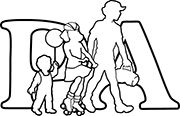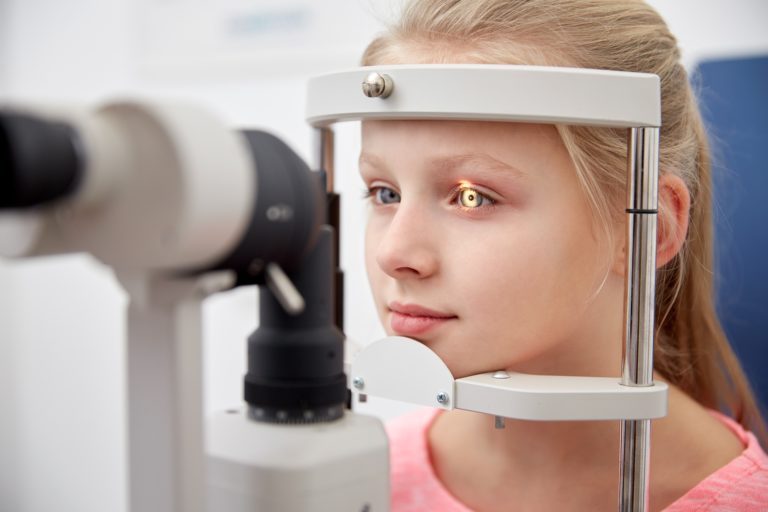Eye health and safety begins at birth when your pediatrician shines a light in your infant’s eyes and checks for the “red reflex”. This is the same thing that you see in photographs with a flash and it checks to make sure that there isn’t something between the front of the eye and the retina such as a congenital cataract. It’s normal for infants to cross their eyes, however typically this goes away by 6 months and if you consistently notice eye crossing, or one eye wandering, after that age you should bring it up with your pediatrician. For more information on vision development in the first year check out this website: https://www.aao.org/eye-health/tips-prevention/baby-vision-development-first-year
Distance vision screening at the pediatric office typically begins around age 3-4 years old when a child knows their shapes or letters and can participate in screening. There is currently a world-wide epidemic of myopia, nearsightedness, that is likely multifactorial. What we do know, however, is that spending time outside and limiting close up work in childhood can slow the progression of nearsightedness. Screen time, which should be limited to 2 hours a day, can cause eye dryness because we don’t blink as often when using screens. Additionally, kids should be encouraged to take a 20 second break every 20 minutes they are doing close-up work, including reading a traditional book or writing.
It’s also important to keep healthy eyes protected from damage or injury. Wear sunglasses and a wide brimmed hat when you’re outside in the sun to protect the eyes from sun damage. And of course, never look directly at the sun! Wear eye protection during sports participation- especially those that involve flying objected or high impact. Children should wear protective goggles any time an adult would such as when using chemicals or when small particles might fly up in the air. If something does get in your eye, remember not to rub as this can cause small abrasions on the surface of the eye. Instead rinse it out with water or an eye wash station. For more information on eye injuries check out this website: https://www.aao.org/eye-health/tips-prevention/injuries-children
Alaina M. Brown, MD FAAP

